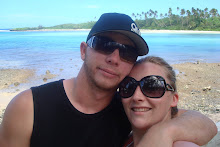It is almost alarming to think of a world without the technology that we have now. It is so engrained in our everyday lives that we can not live with out it. We have come from a world where sticks made fire and we hunted for our food to handing over a piece of plastic to buy food and having the entire world news available at the press of a button.
I know that this class has opened my eyes from thinking of technology as phones and computers to seeing it as everything that happens in the world and everything we to with children. I now know that it is important to include children as they are our future and they will be our next prime minister and eventually looking after us when we are too old to look after ourselves. By stopping children from experiencing technology and all it has to offer we are taking away what will or already is a huge part of their life. I feel that we need to try our best to include children in every aspect of technology that is possible and give them more opportunities to explore technology on their own and with us.
I love how open children are to learning and have become really excited about technology and using it with the children. I have seen now how much they are capable of and am excited to see how far I can extend their learning and how much I can give them to help make sense of their world.
I believe in scaffolding and I feel that to scaffold a child’s learning creates relationships, trust and a bond that you both have to learning. I love how the children always ask me to do more and to use the camera then print the photos. They all know how to print and how to use the computer for basic purposes now and I can’t wait to see how much more I can show them.
I was surprised at how surprised I was with their capabilities and I saw first hand how doing nothing except provide an opportunity can extend children’s learning for example the photo blog, the child already knew how to take the pictures and took some amazing ones of full faces and not slanted so he had practiced it already. I now know that he is able to handle the responsibility of the camera and then we can print the photos off for him to have forever. With the other blogs the children all showed an interest in the activity but had never been given the opportunity. The piklet activity is something that can be altered to make different things using different cooking equipment or making edible playdough as another thing to eat and show for their hard work.
Now that I have these experiences to start me off I can keep building on them and giving the children more and more opportunities and different chances to show their skills in technology and how capable they are.
